The Complete Guide to The Mount of Olives
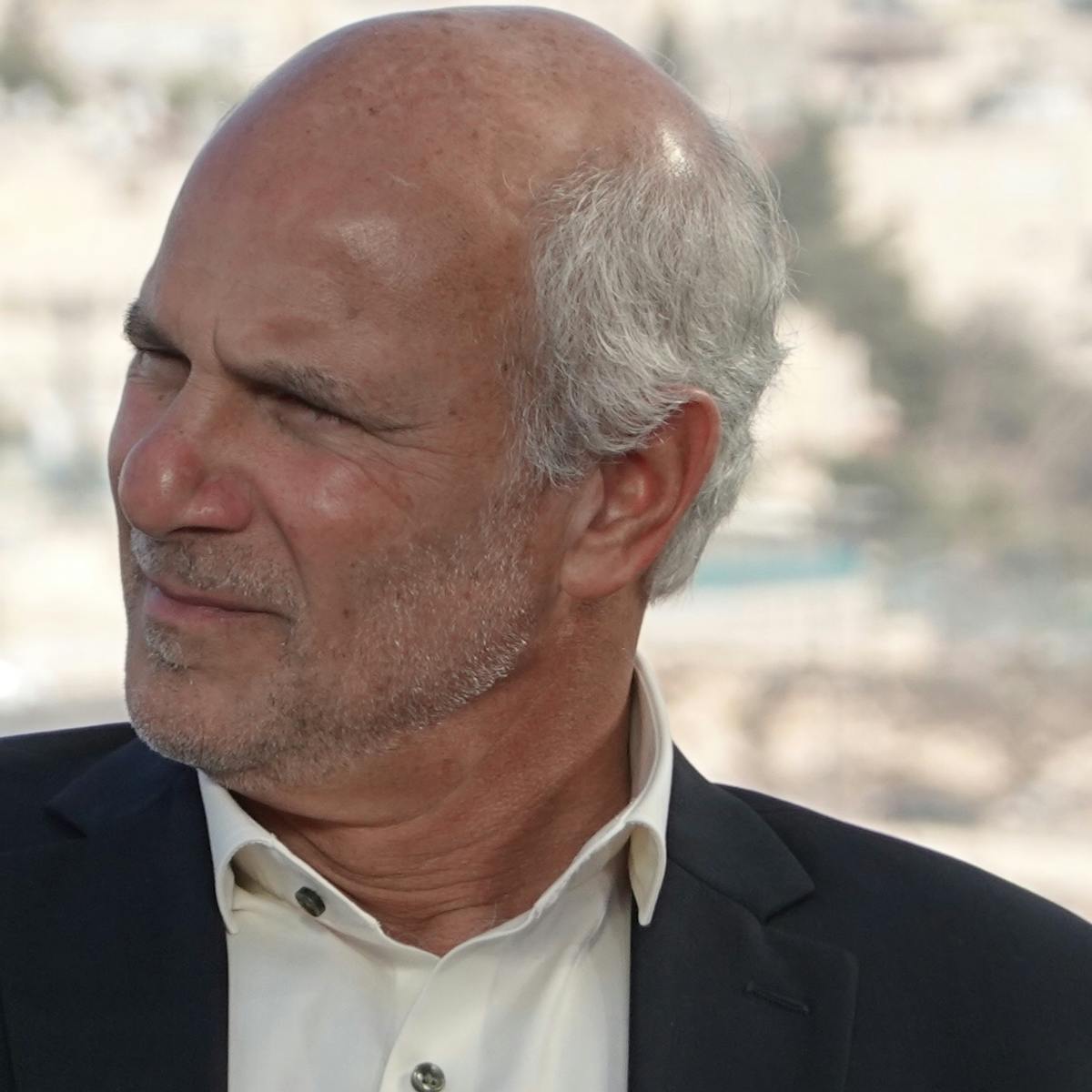
The Complete Guide to The Mount of Olives
Stretching prominently on the eastern flank of Jerusalem just across the Kidron Valley, one cannot miss the impressive outline of the Mount of Olives.
Mentioned in many biblical stories and events, this mountain range is home to rich history, fascinating archeology, and unending religious fervor.
While the majority of the present-day residents who live on the Mount of Olives today are of Arab descent (Muslims and Christians alike), the largest and the oldest Jewish cemetery in the world is stretching across the western, southern, and eastern slopes of the mountain, totaling more than 120,000 graves!
Jewish people have been buried on the Mount of Olives for millennia. We have seen fewer burials, however, in recent years, mostly due to the fact that the cemetery is simply overcrowded.
The graves of countless prominent Jewish figures dot the mountainside, among them King David’s son Absalom, famous Rabbis, and even Israel’s Prime Minister Menachem Begin.
What is it that has drawn so many devout Jews to this particular burial site over so many centuries? What are the biblical treasures that call for the devotion and affection of millions of Christians from around the world for nearly 2,000 years? And what do Muslims revere and worship in this mountain?
The discerning traveler will find answers to these questions not only in the mountain’s historical past but also in its remarkable present, as well as intriguing future as it appears in Bible prophecy.
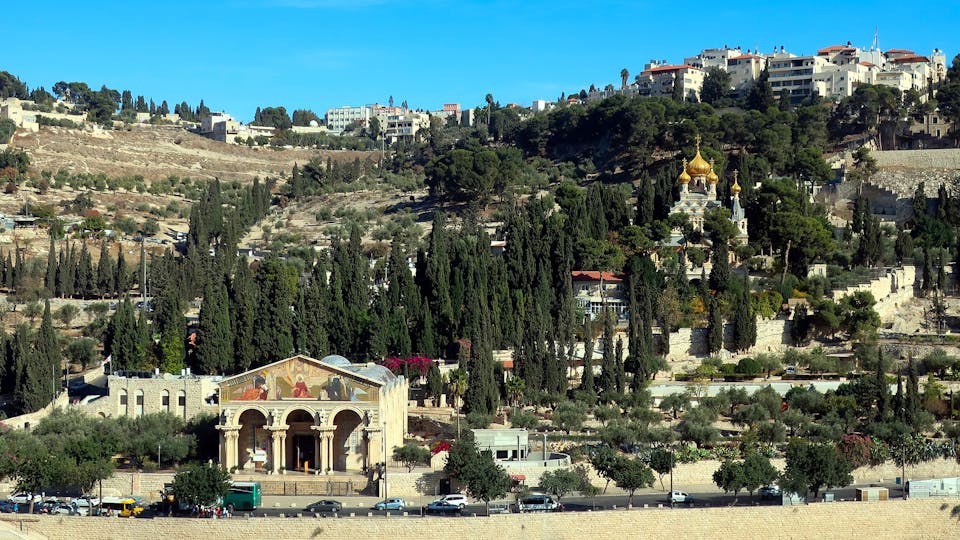
What's The History of The Mount of Olives?
Since the dawn of recorded history, long before Jerusalem became King David’s Capital City, the Mount of Olives served as the eastern border of Jerusalem, Salem of ancient times, creating a natural barrier between the city and the Judean desert to the east.
This is the reason some scholars interpret the name ZION (often referred to Jerusalem) as “the city on the edge of the wilderness,” since ZION in the Hebrew language is a derivative of the word “TZI-YA” meaning wilderness.
During the Israelite First and Second Temple periods, Jerusalem and the Temple Mount were the centers of Israel’s cultural, social, and religious life, greatly impacting the status of the Mount of Olives.
Due to its proximity to the Temple, the mountain was attributed special religious significance and gained importance for Israel’s religious services and priestly ceremonies such as the Biblical High Holidays, the coronation of the kings of Israel, and during the frequent visits of Jesus of Nazareth to Jerusalem, Bethpage and Bethany as recorded in the Gospels.
Jesus often traversed across the Mount of Olives on His way into and out of the City of Jerusalem.
He gave His epic Olivet Discourse (Mathew 24) from that mountaintop overlooking the Temple Courts, and it was from the eastern slopes of the Mount of Olives that Jesus was recorded to have been ascended to heaven (Luke 24:50-51).
Even after the destruction of the Second Temple in 70 AD, the surviving Jewish population used the Mount of Olives to celebrate biblical feasts and perform religious ceremonies throughout the long centuries during which they had no access to Jerusalem itself.
For thousands of years, the Mount of Olives served as a traditional site for Jewish pilgrims arriving at Jerusalem from the north or the east.
Elevated higher than the Temple Mount itself, the Mount of Olives offers a breathtaking view of the City of God and provides a natural resting place to pause, pray the pilgrim’s prayer of thanksgiving, and prepare for the final approach to the Temple courts across the Kidron Valley.
Following the 1948 Arab-Israeli War (Israel’s war of independence), the country of Jordan was in control of the area, and Israelis were not permitted to visit the Mount of Olives.
The situation changed, however, following the 1967 Six-Day War when Israel recaptured the region and established Israeli sovereignty over Temple Mount and the Mount of Olives.
Today, the area is administered by the State of Israel and is a focal point for tourist groups and religious pilgrims arriving from all over the world.
The area is safe for visitors, there is ample parking, and the famous lookout promenade is a must-see spot for every visitor to the Holy Land.
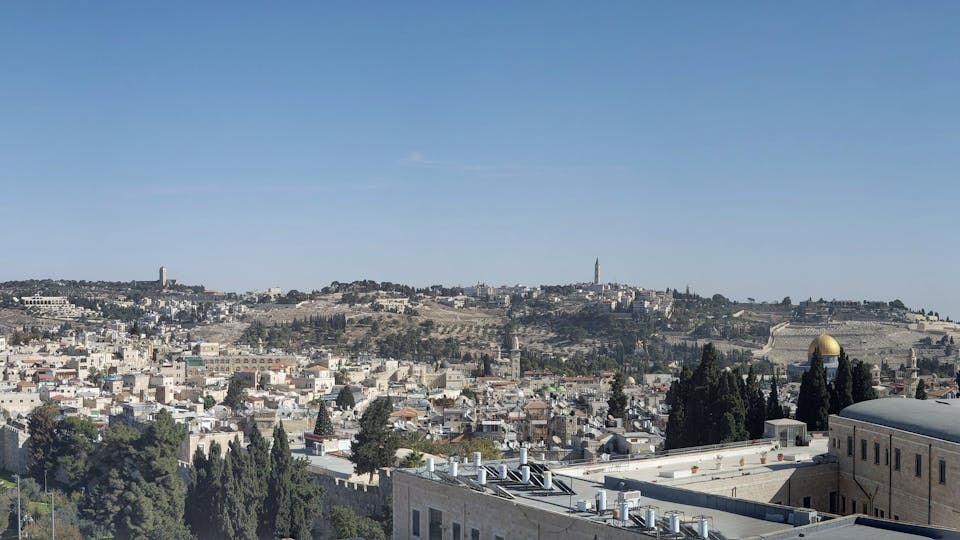
Geography of The Mount of Olives
The Mount Of Olives is actually a moderate size mountain range extending from Mount Scopus in the north to the slopes of the Kidron Valley in the south.
Though not large in dimensions compared to other famous mountains around the world, this mountain offers a breathtaking view of Jerusalem to the west and of the wilderness of Judea and the Dead Sea to the east.
Composed mostly of limestone rock and covered with a layer of rich soil, the Mount of Olives offers good conditions not only as a popular burial site, but also as fertile ground for growing olives which are famous for their exquisite flavors.
The mountain has three prominent summits: Mount Scopus (826 meters), Mount of Olives itself (816 meters), and Mount of Anointment in the south (743 meters).
Though not the tallest mountain in the Jerusalem region, the Mount of Olives is the only mountain referred to as “The Mountain” by pilgrims arriving at Jerusalem, signifying its significance from ancient times.
A few separate summits are visible on the Mount of Olives to the eye of the discerning visitor:
- Mt. Scopus Summit
From the most northern peak of Mount Scopus, pilgrims would express their devotion and offer prayers as they neared the Holy City of Jerusalem.
The First Century historian Josephus Flavius wrote that arriving “… to the place called Scopus, from which the city can be viewed …” he emphasized the breathtaking view from that summit as Jerusalem is first seen by travelers approaching from the north or the east.
According to tradition, this is where Israel’s High Priest met Alexander the Great during the Greek Empire’s invasion of the Middle East. The meaning of the name Scopus (צופים) is a vantage point for observation, and precisely due to this prominent and strategic status this summit often served as camping grounds for invading armies approaching Jerusalem.
2. Mount of Olives Summit
Located directly east of the Temple Mount, this central summit of the Mount of Olives carries great significance for all three monotheistic religions.
This is the place the Hebrew prophet Zachariah referred to as “The Mount of Olives which is before Jerusalem on the east.” (Zachariah 14:4).
Christian traditions connect many events affiliated with Jesus to this location including the Olivet Discourse of Mathew 24, the final prayer vigil at Gethsemane, the ascension to heaven, and the road leading to Bethany and Bethpage where Jesus had often stayed during his many Jerusalem visits.
At the peak of the Mount of Olives is the Arab village of Abu Tor, which is next to the graves of the prophets, naming the village also the “Village of the Prophets.”
3. “The Bench”
According to tradition, this lowest spot of the entire mountain range, the “bench,” was central for Jewish life at the dawn of the middle-ages when Judaism was denied access to Jerusalem and was struggling to define its identity without the Temple services.
Here, across the valley from the then inaccessible Temple courts, Jewish worshipers celebrated the Feast of Tabernacles, encircling the area seven times as was the tradition at the Temple Mount.
The choice of this site as central for the Jewish community at that time was linked to the tradition that this was the place the Divine Presence retreated to following the destruction of the Temple as the prophet Ezekiel described.
According to Christian tradition, this “Sitting Place” or “the bench” also commemorates the place where Mary the mother of Jesus sat to rest while making her journey to the Mount of Olives and Bethany.
4. The Mount of Corruption
This southernmost branch of the Mount of Olives where the village of Silwan is located today is named the “Mount of Corruption.”
Here, according to tradition, King Solomon erected the pagan altars for his non-Jewish idol-worshipping wives.
Later traditions relate to this summit as the “Mount of Abomination” or the “Mount of Affront,” referring no doubt to what ancient pilgrims and historians described as hideous and cruel rituals that were performed on this site by idol worshippers.
Churches on The Mount of Olives
1. Church of Mary Magdalene (The Russian Orthodox Church)
The distinctive seven gold onion domes of this beautiful church shine out across the epic landscapes of the Mount of Olives. The building was constructed in 1888 in honor of the Russian Czar’s mother.
2. Russian Orthodox Church of the Ascension
The 200 feet tall tower rises up over the village of A-Tur located on the Mount of Olives. According to Russian Orthodox tradition, this was the site of Jesus’ ascension. The church and convent were built in 1870-1887 and include a chapel dedicated to John the Baptist.
3. Augusta Victoria Lutheran Church
The Augusta Victoria Lutheran Hospital (AVH) is a prominent feature of the Mount of Olive’s skyline since 1950 and is dedicated to helping the Palestinian community in cooperation with UNRWA and the UN. The building was constructed in 1910 and was the first in Jerusalem to have electricity.
4. Chapel of the Ascension
Situated at the highest point of the Mount of Olives, the small octagonal chapel with the distinctive dome was originally constructed in 392 AD, marking the traditional spot from which Jesus is believed to have ascended to heaven.
A stone with an embedded footprint is believed to be the footprint of Jesus as he stepped up to heaven.
The original structure was destroyed by the invading Persians, reconstructed by the Crusaders, and purchased in 1,198 by Saladin to serve as a mosque. Today it belongs to the Islamic Waqf (religious authorities) in Jerusalem, operating an active mosque adjacent to the Chapel.
5. Church of All Nations (Basilica of the Agony)
Considered by many the most prominent and beautiful church on the Mount of Olives with its stunning gold mosaic, the church is situated right next to the Garden of Gethsemane and marks the place where Jesus prayed in deep agony on the night of His arrest.
A large rock near the altar is believed to be the very spot where Jesus prayed and sweated drops of blood. The construction was funded by 12 different nations, giving it its unique name, all of which are honored by a mosaic inlaid in the gold ceiling of the church’s 12 cupolas.
6. Dominus Flevit (The Lord Wept)
This Franciscan church which was designed by the famous Anton Barluzzi and constructed in 1955 resembles the shape of a teardrop, commemorating the moment when Christ wept when he prophesied the impending destruction of Jerusalem.
7. Pater Noster (The Church of the Lord’s Prayer)
This convent and church which are run by the Carmelite Cloistered Sisters are constructed on the site where Jesus is believed to have taught his disciples the Lord’s Prayer (Luke 11:2).
143 ceramic tiles cover the inner walls of the complex with The Lord’s Prayer written on each one in a different language. Inside the rock-hewn cave, a visitor can see the remains of the original church which was built in the fourth century AD. The present-day church was built in 1874 following the destruction of the earlier buildings by Muslim invaders.
Other famous sites on the Mount of Olives include the Tomb of Mujir al-Din al-Ulaymi; the Tomb of the Prophets; Mary’s Tomb; Brigham Young University – Jerusalem Campus; Burial Crypts of Rabiya al-Adawiyya, Pelagia, Hulda; the Ibrahimieh Community College; Garden of Gethsemane; International House of Prayer; Jerusalem Princess Basma Center for Disabled Children, and the Little Family of Resurrection.
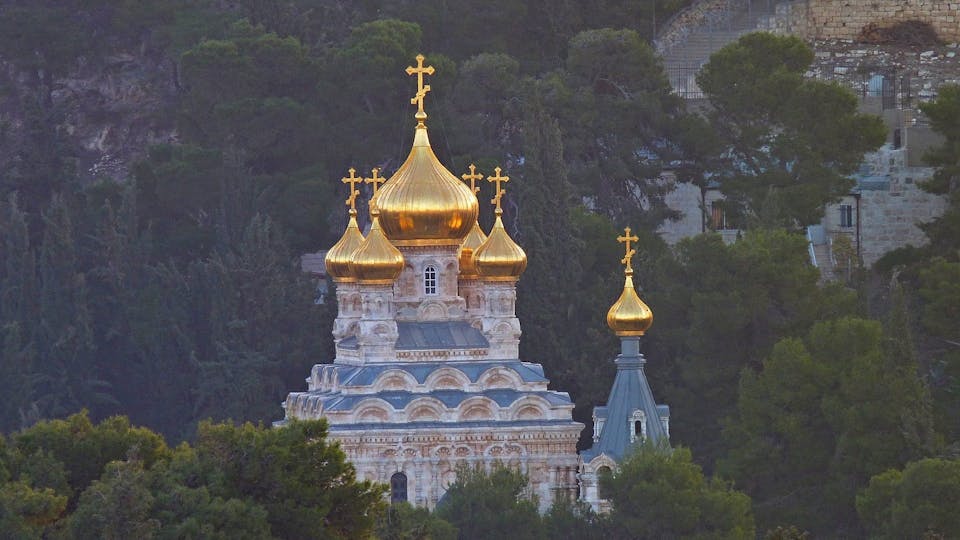
Future of The Mount of Olives
Not only does the Mount of Olives appear prominently throughout past and present events, but both Old and New Testament Scriptures position the mountain as a central point for significant future events as well.
According to the Hebrew prophet Zachariah, the Mount of Olives is the very location upon which the God of Israel will step down upon as He returns to earth to win the final war against Jerusalem and to establish His global rule of peace and justice.
As it is written, “Then the LORD will go forth and fight against those nations, as He fights in the day of battle. And in that day His feet will stand on the Mount of Olives, which faces Jerusalem on the east. And the Mount of Olives shall be split in two, from east to west, making a very large valley; half of the mountain shall move toward the north and half of it toward the south ... And the LORD shall be King over all the earth. In that day it shall be, ‘The LORD is one, and His name one.’” (Zachariah 14).
New Testament Scriptures also makes a clear connection to the Mount of Olives when referring to the Second Coming, or the return of Jesus to earth.
The Bible says that immediately following the Lord’s ascension to heaven from the Mount of Olives, the disciples, “ … while they looked steadfastly toward heaven as He went up, behold, two men stood by them in white apparel, who also said, ‘Men of Galilee, why do you stand gazing up into heaven? This same Jesus, who was taken up from you into heaven, will so come in like manner as you saw Him go into heaven…’” (Acts 1:10-11).
In other words, New Testament believers have a strong reason to expect that Jesus’ return will take place upon the Mount of Olives.
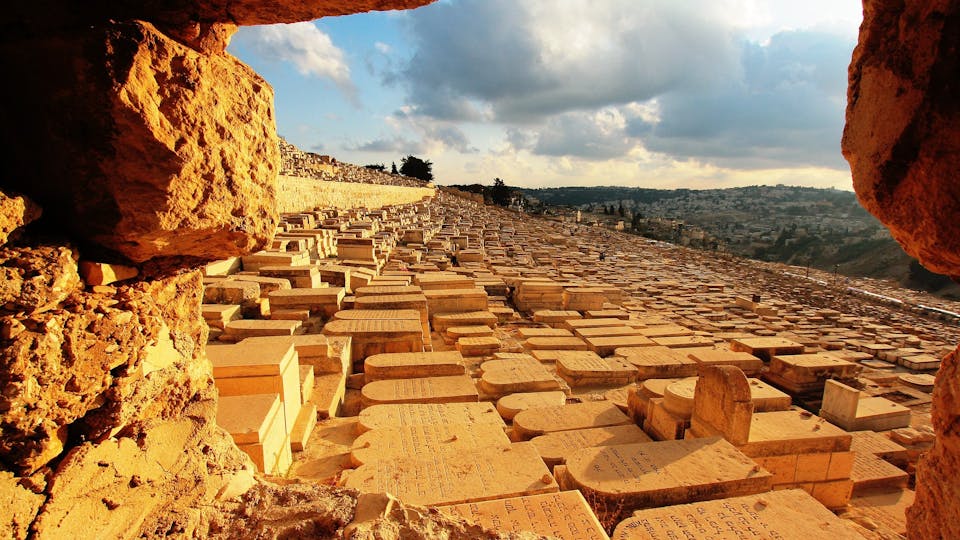
Five Amazing Bible Verses About The Mount of Olives
- “So David went up by the ascent of the Mount of Olives, and wept as he went up; and he had his head covered and went barefoot. And all the people who were with him covered their heads and went up, weeping as they went up.” (2-Samuel 5:30)
- “And in that day His feet will stand on the Mount of Olives, Which faces Jerusalem on the east. And the Mount of Olives shall be split in two, from east to west, making a very large valley; half of the mountain shall move toward the north and half of it toward the south.” (Zachariah 14:4)
- “Now as He sat on the Mount of Olives, the disciples came to Him privately, saying, ‘Tell us, when will these things be? And what will be the sign of Your coming, and of the end of the age?” (Mathew 24:3)
- “Then, as He was now drawing near the descent of the Mount of Olives, the whole multitude of the disciples began to rejoice and praise God with a loud voice for all the mighty works they had seen…” (Luke 19:37)
- “And He led them out as far as Bethany (eastern slopes of the Mount of Olives), and He lifted up His hands and blessed them. Now it came to pass, while He blessed them, that He was parted from them and carried up into heaven. And they worshiped Him, and returned to Jerusalem with great joy.” (Luke 24:50-52).
Making your travel plans to Israel was never simpler than now!
Let Sar-El Tours’ experienced team of professionals help you plan the perfect itinerary, book your ground services and accommodations, and secure the best tour guide to lead you and your family or group as you explore the epic vistas of the Promised Land, visit active and amazing archeological biblical sites, and enjoy the miracle of the modern-day State of Israel.